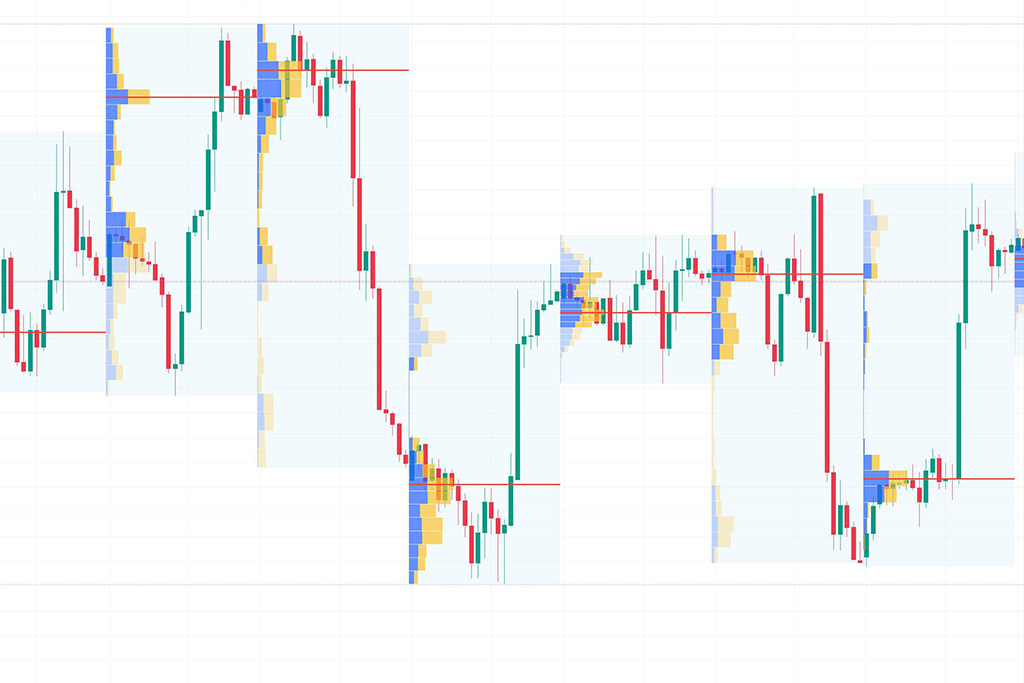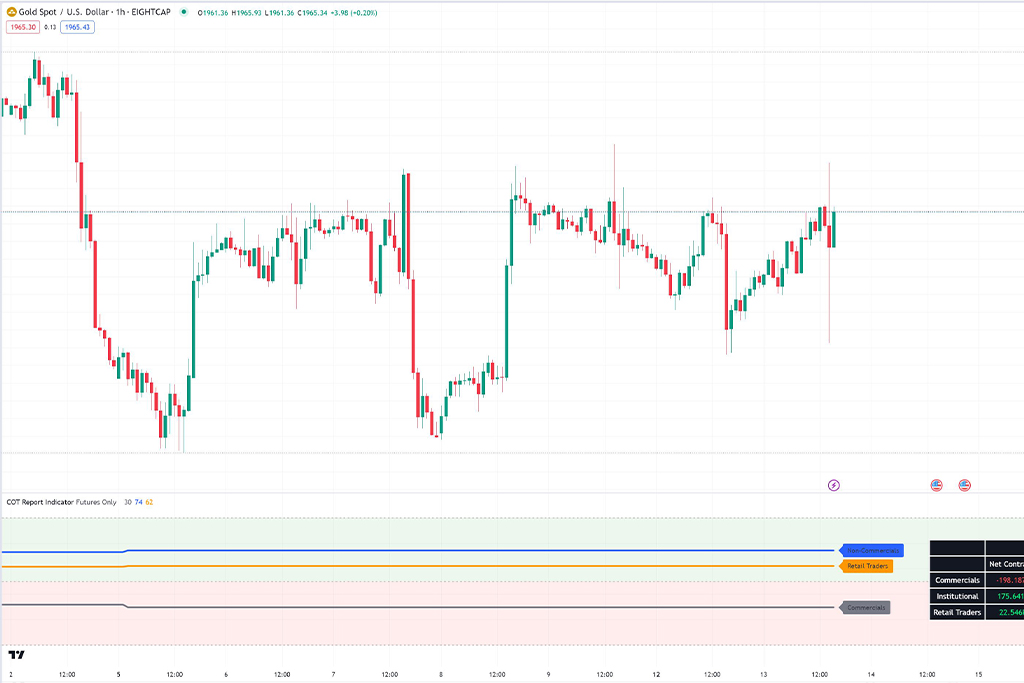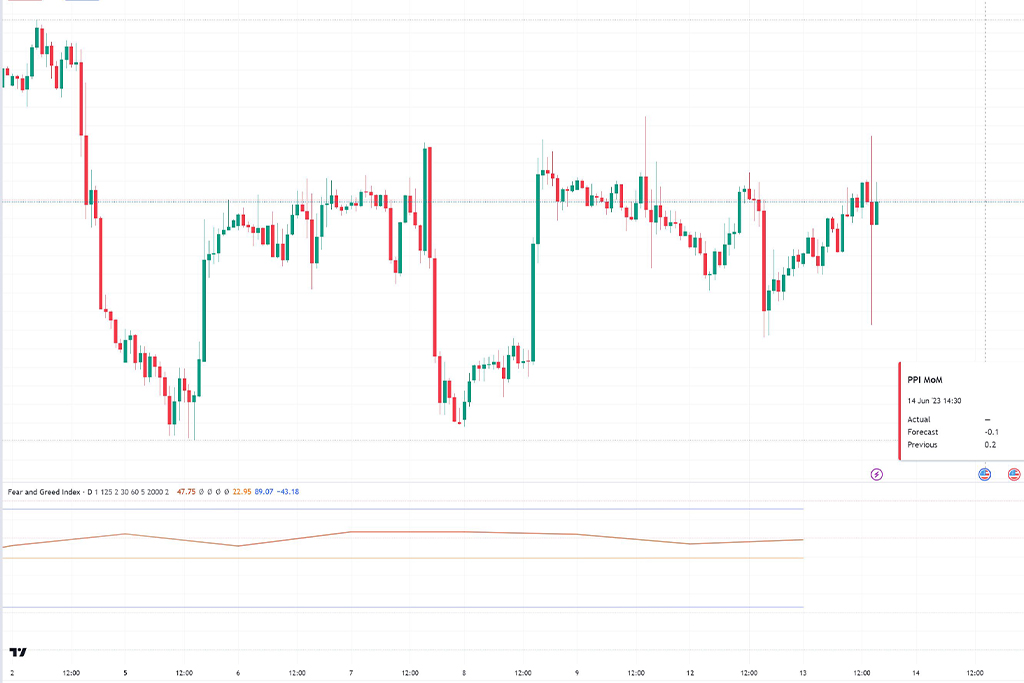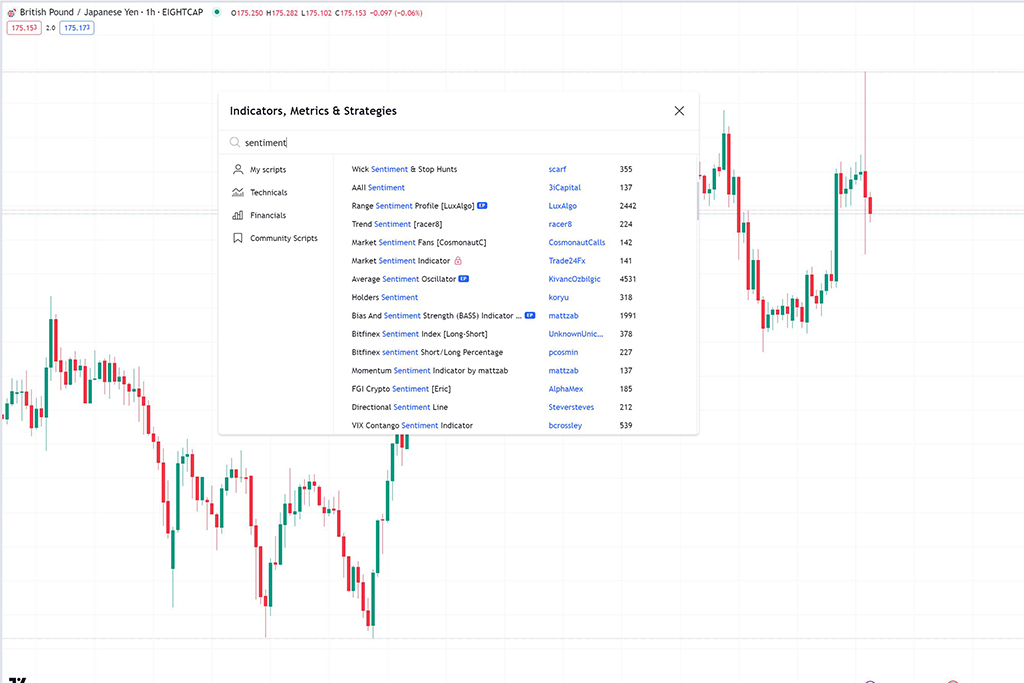Exploring the Most Common Sentiment Indicators on TradingView

TradingView, a popular platform among traders, offers a wide range of sentiment indicators to assist traders in analyzing market sentiment and identifying potential trading opportunities. In this article, we will delve into the most common sentiment indicators available on TradingView, their applications, and provide examples to demonstrate their practical use in various types of CFD (Contract for Difference) trading.
Volume Profile
Volume Profile is a widely-used sentiment indicator that displays the volume traded at each price level over a specific period. It provides insights into where significant buying or selling pressure exists. Traders use volume profile to identify areas of high activity, such as support and resistance levels, which can influence market sentiment. For example, if the volume profile shows a significant volume cluster near a certain price level, it suggests that traders have a strong sentiment around that level.

Relative Strength Index (RSI)
The Relative Strength Index is a momentum oscillator that measures the speed and change of price movements. It oscillates between 0 and 100, with readings above 70 indicating overbought conditions and readings below 30 indicating oversold conditions. Traders use RSI as a sentiment indicator to identify potential trend reversals or overbought/oversold levels.
Commitment of Traders (COT) Report
The Commitment of Traders report provides a breakdown of the positions held by different types of traders in various futures markets. It offers insights into the sentiment of commercial traders, non-commercial traders (speculators), and small traders. By analyzing the COT report, traders can assess the sentiment of these market participants and make informed trading decisions.
For example, if the COT report shows that commercial traders are accumulating long positions, it indicates a bullish sentiment.

Fear and Greed Index
The Fear and Greed Index is a sentiment indicator that measures the emotions and sentiments prevalent in the market. It takes into account various factors, including stock price momentum, market volatility, put-call ratios, and safe-haven demand. The index ranges from 0 to 100, with extreme fear below 20 and extreme greed above 80. Traders use the Fear and Greed Index to gauge market sentiment and identify potential contrarian trading opportunities.

Social Media Sentiment Analysis
With the rise of social media platforms, sentiment analysis of social media data has become a valuable tool for traders. TradingView offers integrations with social media platforms like Twitter, allowing traders to analyze sentiment based on tweets and other social media posts. By monitoring social media sentiment, traders can gauge public sentiment towards a particular asset and potentially identify early signs of market shifts.
In addition to the standard sentiment indicators available on TradingView, traders also have the option to create and utilize custom sentiment indicators. These custom indicators allow traders to tailor their analysis to specific market conditions, assets, or trading strategies. In this article, we will delve into the concept of custom sentiment indicators on TradingView, and their benefits, and provide examples to illustrate their practical application in various types of CFD trading.
Social Media Sentiment Aggregators
Custom sentiment indicators can be developed to aggregate sentiment data from multiple social media platforms, news sources, or financial forums. By collecting and analyzing data from these sources, traders can gain a broader understanding of public sentiment towards a particular asset or market.
For example, a custom sentiment aggregator might calculate sentiment scores based on the frequency of positive or negative keywords mentioned in social media posts related to a specific stock. This can help traders gauge overall sentiment and potential market shifts.
News Sentiment Analysis
News sentiment analysis involves creating custom indicators that analyze the sentiment of news articles or headlines related to specific assets. By monitoring news sentiment, traders can gain insights into how news events and media coverage are influencing market sentiment. For instance, a custom news sentiment indicator might assign positive or negative sentiment scores based on the tone of news articles mentioning a particular currency pair.
We also offer such segment coming from Acuity Tools we offer you free of charge.
Sentiment Indexes
These indexes can provide a comprehensive view of market sentiment by considering various factors simultaneously. For instance, a custom sentiment index might combine social media sentiment, options sentiment, and news sentiment to generate an overall sentiment score. Traders can then use this composite indicator to assess market sentiment and make informed trading decisions.
Sentiment-Based Price Patterns
Custom sentiment indicators can also be developed to identify specific price patterns that correlate with sentiment shifts. Traders can create custom indicators that recognize patterns based on sentiment data and provide alerts when these patterns occur.
For example, a custom sentiment-based price pattern indicator might identify a “sentiment divergence” pattern, where sentiment is diverging from price action, indicating a potential trend reversal. This can help traders spot sentiment-driven trading opportunities.

Custom sentiment indicators on TradingView provide traders with the flexibility to create specialized tools tailored to their unique trading strategies and preferences. By developing custom sentiment indicators, traders can gain deeper insights into market sentiment, monitor sentiment across various sources, and identify sentiment-driven trading opportunities. Whether it’s social media sentiment aggregators, news sentiment analysis, options sentiment, sentiment indexes, or sentiment-based price patterns, custom sentiment indicators can enhance a trader’s ability to make well-informed decisions in CFD trading.
In general, Sentiment indicators provide valuable insights into market sentiment, helping traders make more informed decisions in CFD trading. TradingView offers a diverse range of sentiment indicators, including Volume Profile, RSI, COT reports, Fear and Greed Index, and social media sentiment analysis. By utilizing these indicators, traders can gain a deeper understanding of market sentiment and identify potential trading opportunities.
* The information provided here has been prepared by Eightcap’s team of analysts. All expressions of opinion are subject to change without notice. Any opinions made may be personal to the author and do not reflect the opinions of Eightcap.
In addition to the disclaimer on our website, the material on this page does not contain a record of our trading prices, or represent an offer or solicitation for a transaction in any financial instrument. Eightcap accepts no responsibility for any use that may be made of these comments and for any consequences that result. No representation or warranty is given as to the accuracy or completeness of this information. Consequently, any person acting on it does so entirely at their own risk. Any research provided does not have regard to the specific investment objectives, financial situation and needs of any specific person who may receive it. It has not been prepared in accordance with legal requirements designed to promote the independence of investment research and as such is considered to be a marketing communication.
Please note that past performance is not a guarantee or prediction of future performance. This communication must not be reproduced or further distributed without prior permission.


